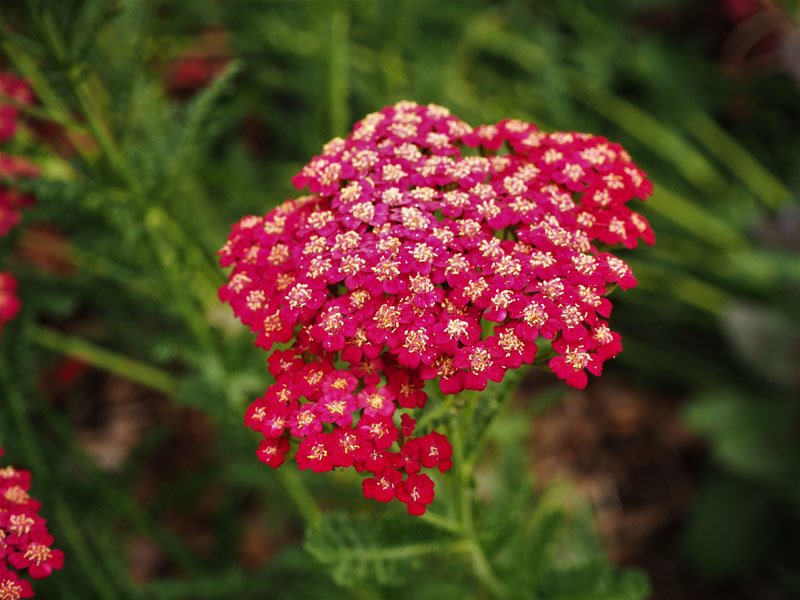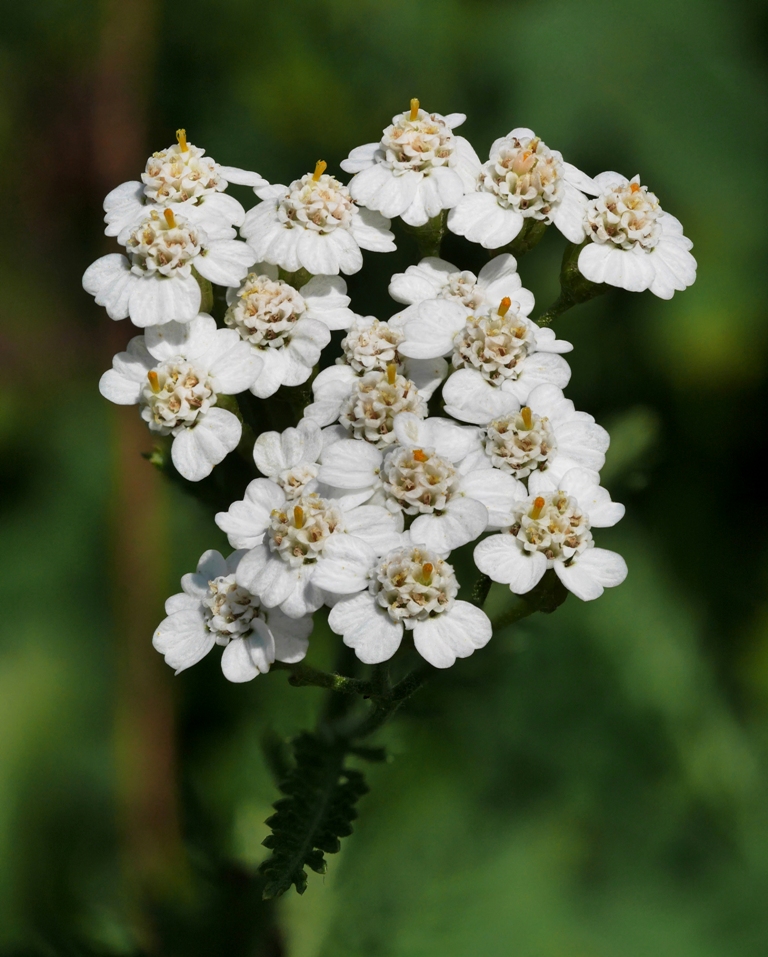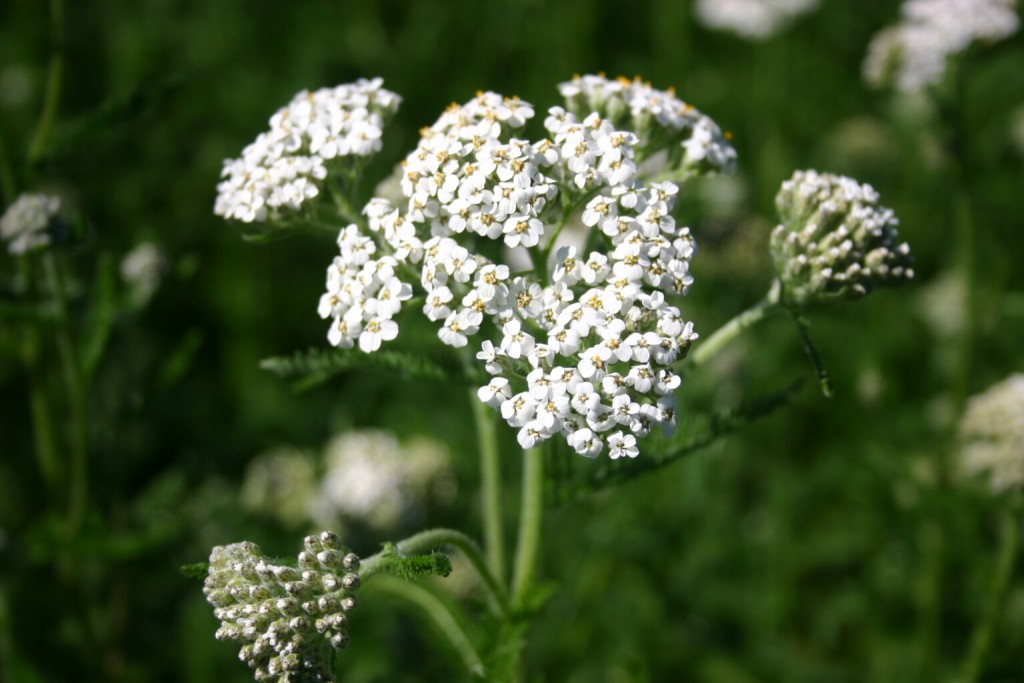How to Grow and Care for Yarrow Flower

Yarrow flowers are stunning, and they are not just some plant that looks pretty. They have a variety of uses in the medical field too. It is a starflower, with many admirable qualities. It is a healing plant that has even been used to treat wounded soldiers on the battlefield. Want to know more about all the hype around the yarrow flower? Read on to learn more.
Family and Genus
The original and scientific name of Yarrow is Achillea Millefolium. It is an aromatic flowering plant that belongs to the family Asteraceae. While it is commonly found in the regions of the northern hemisphere in continents like Asia, Europe, and North America, in countries like New Zealand and Australia, the plant is actually used as feeding stock for livestock. Although commonly known as yarrow around the world, this flowering plant goes by different names in different regions. It even has a folk name known as Devil’s Nettle. Other names of Yarrow include Bloodwort, Staunchweed, Military Herb Field Hops, Nose Bleed, Sanguinary, Knight’s Milfoil, Gordaldo, and Soldier’s Woundwort. The flower also goes by the name ‘thousand leaves’ since the plant has many finely divided leaves and beautiful fern-like foliage, which earned the name Milfoil.
Features
Yarrow is an herbaceous and perennial flower. A perennial flower is any flower that lasts for several years and regrows every year. It usually has flowers that are in flat-topped or dome-shaped clusters, and the flowers are typically small and white. The plant can grow up to 3 feet in height and is borne in different colors, including white, red, gold, yellow, and pink. The plant has a fern-like appearance thanks to its fine and feathery cut leaves. All the leaves are evenly distributed on the stem and can be bipinnate or tripinnate. The leaves are usually grown up to 5-20 cms in length. The plant is also very aromatic and has a strong and sweet scent. Having a generalized pollination system, it is also a good pollinator for gardens since the plant can attract a wide variety of bees, butterflies, and other insects.
Varieties and Subspecies of Yarrow

The various varieties and subspecies of the yarrow plant are as follows:
- Achillea Millefolium Subsp. Millefolium.
- A. m. Subsp. m. var. Millefolium – found in Europe, Asia.
- A. m. Subsp. m. var. Borealis – found in the Arctic regions.
- A. m. Subsp. m. var. Rubra – common to Southern Appalachians.
- A. Millefolium Subsp. Chitralensis – widespread in the western Himalayas.
- A. Millefolium Subsp. Sudetica – found in the Alps, Carpathians.
- Achillea Millefolium var. Alpicola – found in the Western United States, Alaska.
- Achillea Millefolium var. Californica – common to California, Pacific Northwest.
- Achillea Millefolium var. Occidentalis – found all over North America.
- Achillea Millefolium var. Pacifica – found on the west coast of North America and in Alaska.
- Achillea Millefolium var. Puerile – prevalent in California.
Various Uses of Yarrow
Yarrow plant has several uses:
- It is used to induce sweating during fever and also as an herb for the common cold, hay fever, diarrhea, loss of appetite, and for the absence of menstruation.
- It is used in many gardens as a companion plant since it is a pollinator that attracts bees, butterflies, and other similar insects.
- In some cultures, the plant is used as a love charm. Some people even consider yarrow to be a sacred plant with many spiritual powers.
- During the war, the plant has been used to treat wounds of soldiers.
- The plant has exceptional and antiseptic and antibacterial properties, which is relied upon for staunching blood flow.
- The leaves, stems, and flowers are great to treat skin rashes, ulcers, and hemorrhoids when they are used in combination.
- Yarrow used to serve as a primitive anesthetic in ancient folk medicine.
- Since the plant is drought resistant, it has been used widely in agriculture to combat soil erosion.
- Yarrows flowers and leaves have been used to make liquor.
- The fresh leaves of the yarrow plant have great medicinal properties that chewing them can significantly relive one from toothache. The plant infusion is also great for curing severe earaches.
- The plant can be used as an effective insect repellant.
- Yarrow is used in combination with some other herbs to treat gastrointestinal problems and diseases.
These are just some of the different uses of this amazing herbal plant, and there are still many other uses.
Best Growing Practices

With all its healing medicinal properties and its beautiful showy flowers that can attract everybody, the yarrow plant should be in your home garden. After all, how can you say no to such a great plant? Growing the yarrow plant by yourself is no task at all, and the plant requires only very little maintenance once it has been planted. You can either grow yarrow directly from the seed, or you can buy some yarrow plants and bury it in the soil. In either case, make sure that each plant is at least 12-24 inches away from the next plant. Even though the yarrow can grow in any type of soil, well-drained soil is always recommended. They also need exposure to full while growing. Minimum water and the maximum sun is what the yarrow plant requires to flourish well.
Fertilizing
Yarrow is one of those plants that do not need to be fertilized. They just need dry soil without much water content and lots of sunlight. However, you can still do a compost pile before planting so that the plant gets all the required nutrients. 2 to 4 inch layers of compost is more than enough, and every year you can add a thin layer of compost. Re-planting can also be done form stem cuttings, but make sure to do it during early spring or summer.
Common Pests
Although yarrow needs little to no maintenance once it has been planted, it is still susceptible to attack from pests and insects like spittlebugs, but this happens only very rarely. Diseases to affect the plant include botrytis mold and powdery mildew. These can be very easily treated by using a fungicide.
Yes, they are. The medicinal properties of the yarrow plants have been popular since ancient times, and these plants are excellent healing plants that can be used to treat fever, common cold, hay fever, gastrointestinal tract problems, etc. It can even be used to reduce anxiety through essential oils.
The leaves of yarrow can be used directly and can be used as a vegetable in soups, sauces, salads, and almost any other dish. It can also be used as a side dish after boiling and cooking it in butter.
Although the plant is used as a medicine, it still has some side effects like increased urination and drowsiness. Skin irritation may be an issue to some, especially during wound healing when they are used topically. Since yarrow plants are also used to stimulate menstruation in women, pregnant women are not advised to use the plant since it has the potential to cause a possible miscarriage. Yarrow also has an adverse reaction with some drugs like lithium, sedatives, antacids, and anti-inflammatories and therefore advised not to use yarrow while taking these drugs.





